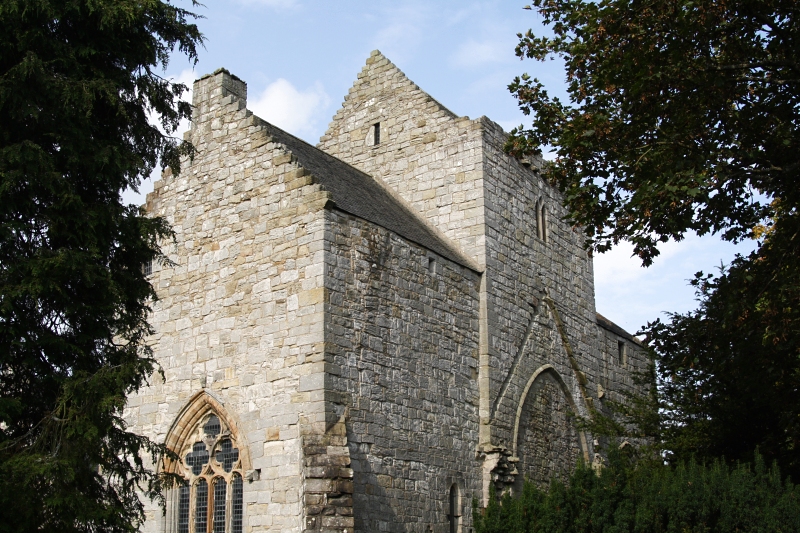
The village of Torphichen is situated midway between Linlithgow and Bathgate in a sheltered valley on the western side of the Torphichen Hills. The name of the preceptory and town always puzzled me; it didn't sound English, Scottish, or even French. I've recently learned that the name is derived from Gaelic: torr-fithichean, "the raven's hill". An ancient place, and once one of great importance, Torphichen now has the feel of an unpretentious yet pleasant village.
The Hospital or Preceptory of Torphichen was the only Scottish seat of the Knights Hospitaller or Knights of Saint John of Jerusalem, counterparts to the Knights Templar during the Crusades. Founded during the reign of David I (1124-1153), construction of the church was started c1200 and completed by the mid-13th century.
The Hospitallers had come to Scotland to recruit and collect funds for the Crusades. There were administration, monastic and domestic buildings. There was also a small hospital or hospice, as there was at all settlements of the Order. None of these buildings remain today. What does remain, and what put Torphichen high on my "must see" list, are the refuge stones.
Resembling a Roman milestone, the central stone in the churchyard marked the center of privileged sanctuary ground. A circle of similar stones stood around the edge of the estate, each a mile distant from the center. Some are still standing. All of the space within the circle formed by these stones was as much a legal sanctuary as the church itself and offered protection against the law to every criminal or debtor who entered and remained within its precincts.
The existence of this safe haven has set my imagination reeling for years. I picture the desperate souls who sought sanctuary at this place so many centuries ago and their reasons for doing so; feel their relief as they sink down on the ground with their back to the stone. Feel their inner turmoil as the panic of flight recedes and the process of untangling their future begins.
During the war between Scotland and England the Hospitallers took the side of the English. For several months between the Battle of Stirling in September, 1297 and the Battle of Falkirk in July, 1298, William Wallace and his army were said to have camped at Torphichen. A book I read while researching this era, entitled Dungeon, Fire and Sword, by John J. Robinson, states that Edward I had sent for Brian deJay, Master of the Knights Templar in England, to fight for England in Scotland in 1298. DeJay did go; but once he was in Scotland, he made straight for Torphichen – and did not fight.
Unfortunately the Preceptory is not open today, so after easily locating the central refuge stone we wander around the churchyard, reading headstones. I find an enigmatic symbol on one stone; it resembles a bow and arrow within a circle, but there are no other engravings – no name nor date – though it is most certainly centuries old.
To the rear of the Preceptory are a number of very interesting old headstones, including two "Adam and Eve" stones. I am fascinated with, and a bit amused by, the male and female figures on these stones, as they are carved in the postures of Highland dancers. Here is evidence that I am not the only person who feels this land is a perfect place. Scotland has been someone's idea of the Garden of Eden for quite some time.

Torphichen Preceptory is a church in the village of Torphichen, West Lothian, Scotland. It comprises the remains of the preceptory (headquarters) of the Knights Hospitaller of the Order of St John of Jerusalem in Scotland.
The Preceptory was built over a vast wooden platform beneath which lay a man made island and causeway thought to date back before the first century AD. Before Christianity came to Scotland the site may have been a place of Pagan worship with a circle of carved standing stones, around a main wooden building that served as a sanctuary and pagan roundhouse.
Read more about Torphichen Preceptory at Wikipedia.